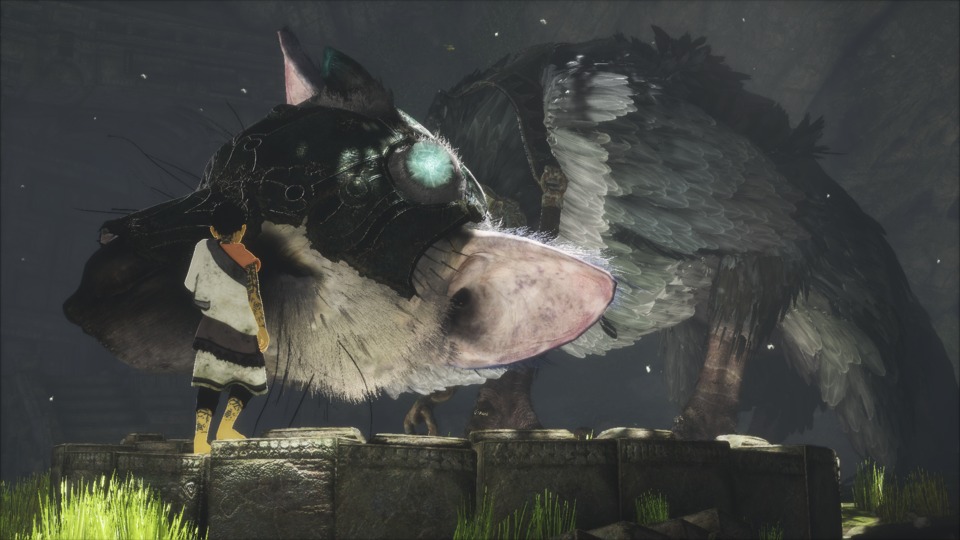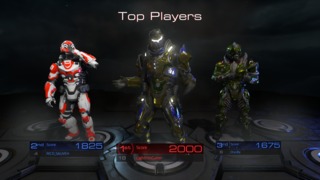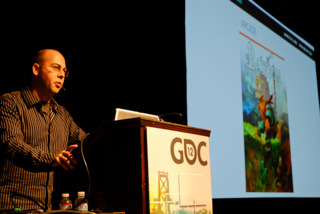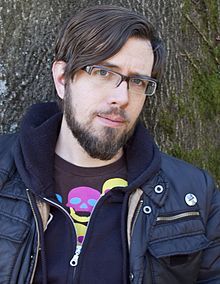
Steve Gaynor is the co-founder of The Fullbright Company, the development studio behind the 2013 hit Gone Home, and the forthcoming Tacoma. Prior to that, he worked at 2K Marin as a level designer on BioShock 2, and served as lead designer and writer on the critically acclaimed Minerva's Den expansion. You can find him sharing PS4 videos on the regular via Twitter.
THIS IS GONNA BE A LONG ONE Y’ALL, STRAP IN:
10. DOOM
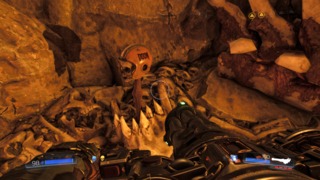
2016 was a year of surprises, mostly bad--but the surprises when it came to games this year were mostly very, very good.
Take, for instance, DOOM. There didn’t seem to be a lot to recommend this one before it came out: a legendarily protracted & turbulent dev cycle, another instance of a classic franchise being rebooted as just its original title with no subtitle--but all in caps this time! (not the only one of these on this list…) a pre-release focus on me-too multiplayer, and a generally low public profile before launch (including review codes being withheld 'til release day) pointed at a game that seemed on track to be swept under the rug. But when it finally arrived, holy crap, did it come out guns blazing.
Who would’ve guessed that the DOOM we got would be so true to what made the original great: insanely fast, gory, and wonderfully campy, DOOM knows exactly what it is, and exactly how to translate that into something that both feels true to its namesake, and aware of the 20+ years of game design & technology that have passed since that original release. Plus, it wins end credits sequence of the year (ECSOTY) Just look how much work they put into this thing!! This is like five or six indie games’ worth of game development just on the end credits. And by god it was worth it.
9. Mafia III
perfect execution perfect crimehttps://t.co/iYtX5tYS4G pic.twitter.com/2S8zjhqvL3
— Steve Gaynor (@fullbright) October 23, 2016
Nnnnnnoooo they were hugging I'm sorryyyyyyyyyyyhttps://t.co/iYtX5tYS4G pic.twitter.com/UFBnzsCBYe
— Steve Gaynor (@fullbright) October 22, 2016
That's called trusthttps://t.co/iYtX5tYS4G pic.twitter.com/qJj3ipROZL
— Steve Gaynor (@fullbright) October 17, 2016
nice pizza dinner... shame if anything happened to ithttps://t.co/iYtX5tYS4G pic.twitter.com/eNbKmSIDz4
— Steve Gaynor (@fullbright) October 16, 2016
@Sirrosen @austin_walker et al: hnnnnngggg pic.twitter.com/S0rh7o0inC
— Steve Gaynor (@fullbright) October 23, 2016
@sirrosen @austin_walker the rawness, my friendshttps://t.co/iYtX5tYS4G pic.twitter.com/5dIcwGwl2e
— Steve Gaynor (@fullbright) October 23, 2016
lmaooo pic.twitter.com/yfA18kB2Xd
— Steve Gaynor (@fullbright) October 24, 2016
8. Deus Ex: Mankind Divided
I was a huge fan of 2011’s Deus Ex: Human Revolution. And as someone who counts the original Deus Ex as one of the most crucial pieces of game design out there, my bar for hitting something that would live up to the original was pretty darn high. But they really nailed it, and I felt like I was playing Deus Ex in all the ways that mattered--an amazing accomplishment, especially for a new team taking on such a complex and storied series.
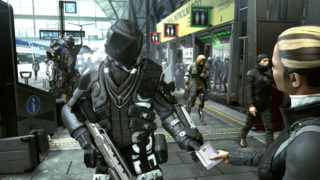
Five years later, Eidos Montreal released the follow-up, and it’s more of the same in most ways--and when we’re talking about the follow-up to a game I loved and just want more of, that’s not a bad thing at all.
Much like Human Revolution, my favorite parts of Mankind Divided take place in the open city hub areas that you’re free to explore and rummage through at your own pace, under your own direction. And the most memorable instance of that for me in Mankind Divided takes the form of the huge, sprawling bank complex at the west end of Prague. I remember wandering into it, not as part of a story mission or anything, and being like.. wait.. I can just rob this entire bank? And then, lo and behold, I spent the next few hours doing just that. It’s such a dense, interconnected chunk of every game mechanic the new Deus Ex games have to offer, all in this one focused building--a full game within a game, a place that delivers on the promise of what playing these games is all about. Opening up every hidden path and emptying out every safe deposit box was just so satisfying… one of my favorite moments of gaming this year, and a real reminder of why this kind of experience can be so empowering.
7. The Witness
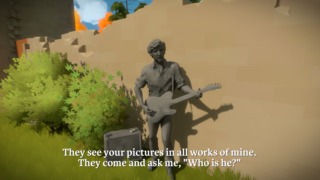
I, like a lot of people, wasn’t entirely sure what to make of The Witness before it came out. The world looked beautifully rendered, and I understood that you wandered around it, finding line puzzles to solve. Was that really it? Yes and no.
What isn’t obvious from the above breakdown is that the line puzzles are a means to an end: The Witness has constructed its own language, a language of rules and behaviors, and the experience of playing The Witness is the experience of being taught that language, and becoming able to speak it fluently. The Witness achieves one of the holy grails of game design: saying to the player, yes, the entire game world is open to you from the beginning; the only thing keeping you from skipping straight to the end is your own knowledge, which you will gain naturally as you play. The Witness is teaching you--completely wordlessly, by the way, only through the language of its own puzzles themselves--and as you return to boards that originally looked completely impenetrable to you, you understand more, and solve them easily. This ties into the game world itself, drawing the island together as a whole unit, creating a complete, unified understanding of elements that initially felt entirely foreign and disparate. That feeling of learning naturally, and of gaining the ability to speak in a new way, is a powerful example of a kind of procedural dialogue between player, designer, rules, and understanding, that games are uniquely capable of achieving.
6. Quadrilateral Cowboy
I love Brendon Chung. His body of work, and himself as a game developer, are an inspiration. My first contact with Brendon was when I sent in a bug report about Flotilla, one of his early games: I emailed telling him that a certain graphic element was causing the game to run super slow on my netbook (lol...) To my surprise, he responded personally within minutes, and within a couple hours had released a patch for the game that included a graphics option to solve my issue. I was still working on big AAA games at the time, and something about that very direct connection to an individual developer that indie games enabled was a real eye-opener to me.
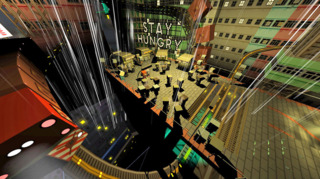
It would be many more years before I went indie myself, but that moment’s always stuck with me. In the intervening years, Brendon has released multiple games, including 30 Flights of Loving, which is an amazing short-form narrative game that came out right at the beginning of Gone Home’s development, and which you should absolutely play if you haven’t.
Which brings us to this year, and Brendon’s biggest, most ambitious project yet: Quadrilateral Cowboy, a game very much in the vein of the Gravity Bone/30 Flights series, but centered on a crunchy core mechanic of 80s hacking via a command line interface. Its retrofuturistic world is so unique, so evocative, so different from anywhere else you’ve visited--and between the hacking-based heist missions, Brendon’s built more of the best-in-business environmental storytelling scenes that he proved himself a master of with 30 Flights--moments that will surprise you, draw you in, where you’re free to roam and explore and find details, discovering the stories of who these people are that you’re in a girl gang with, what this surreal-but-familiar world is all about, and what your place is in it… and it all wraps up with an unexpectedly heart-tugging coda that I didn’t see coming, and has really stuck with me. Quadrilateral Cowboy is Brendon’s craft at its best. Don’t miss it.
5. Firewatch
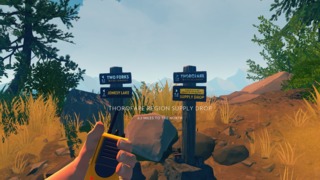
What is Firewatch? Firewatch is a beautifully-rendered place to explore and exist within. A way to commune with a hand-painted vision of nature and America’s promise via a simulated National Forest. A window into a relationship between two lonely people, and a method of living within that relationship, living through it, helping to define it, looking at it from both the inside and outside, considering your role in guiding what these people mean to each other. It’s a singular experience of being someone and being somewhere and inhabiting that experience in an indelible way. Its vision of the Shoshone National Forest becomes somewhere you’ve been, and Henry and Delilah are people you used to know. Firewatch is a vivid memory given life.
4. Dishonored 2
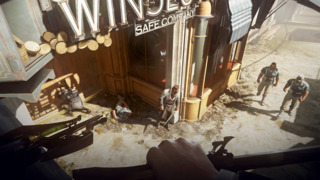
The “immersive sim” is a subgenre of games that represents so much about what I personally value in game design: believable but unfamiliar places that feel lived-in as you explore them; an experience that’s driven by the player’s agency and the player’s intent, that gives the player interactive tools to express their own role within that world; a set of game rules that feel so internally consistent and responsive that they expand what the world is, and the feeling that you are really in it. This design philosophy is a primary influence on how I think about design in my own games, but clearly my own games don’t embody all the things that immersive sims grew to contain: emergent AI behaviors, a wide range of expressive player abilities, upgrades, weapons, stealth options, and more. So when one of those fully-fledged immersive sims does come out, and it’s good (see also: Deus Ex Mankind Divided), I feel so, so happy.
Dishonored 2 embodies all of that. Led by Harvey Smith, Dishonored 2 takes everything that was wonderful about the original Dishonored and expands on it, focuses it, explores it further, makes it more beautiful, more robust, more aware of the player’s desires, and delivers on them in ways that are novel, exciting and surprising. And on top of everything else, the game world and art direction are just beautiful. Karnaca is a dark, imposing, stunning place to be, and I’m so happy to know that, via games like the Dishonored series, immersive sims are having their day in the sun.
3. Fitz Packerton
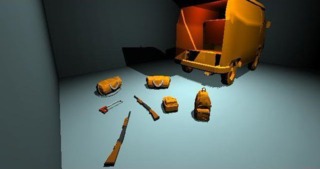
It’s 5 minutes long. It’s free. It’s entirely wordless, and yet expresses one of the most striking and beguiling short stories a game has told in recent memory, all entirely through the language of stagecraft and interactivity. It’s a collaboration between the creator of Quarilateral Cowboy, one of the creators of Hyper Light Drifter, and the voice of Katie from Gone Home. It rewards replaying, reexamining, and reassessing. It is remarkable. Go play it now.
2. Hitman
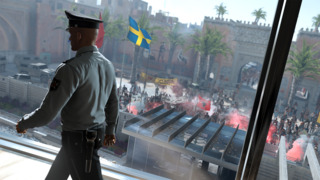
I’ve been a fan of the Hitman series since the beginning. My college friends and I put more hours into playing and replaying the first game than I'd care to admit, and I’ve followed it through its intervening iterations, the highlight of which was Hitman: Blood Money, a game that delivered on the openness, strangeness, humor, and creativity of the series beyond any entry that had come before. It’s been a long time since Blood Money, but 2016 has been the Year of Hitman. This is a true return to form for the series, made with obvious love by a team that wanted to bring what was great about Blood Money into the modern age. And despite some controversy over the game’s episodic downloadable structure, this gradual release schedule--like everything about Hitman’s 2016 version--emphasizes and rewards what’s always been great about the series, encouraging the player to play and replay each episode multiple times, discovering all the different routes, secrets, and options these massive levels. It’s everything a Hitman fan could hope for, as well as a fantastic, funny, inviting introduction to the series.
Hitman was also a personal high note for me as an individual: after months of playing the episodes, streaming them on my Twitch channel, and loudly praising the good and hilarious work of the folks at IO Interactive, it was to my surprise that in the final episode of the 2016 season, I officially became part of the Hitman canon:
@fullbright !!!!!!!! #PS4sharehttps://t.co/DV4mmMLnTW pic.twitter.com/bUOUmPj8bK
— Zac Minor (@zacminor) October 31, 2016
Sometimes, just sometimes, if you love a game enough, it does you the honor of loving you back. Thank you, Hitman, wherever you are. I’ll just be here, a fan in a fancy suit, or maybe just a bathing suit, doing pushups, and I know you’ll be cool with it.
1. The Last Guardian
2016 has been a hell of a year. Stress, heartache, loss, and very bad surprises. Hope, more than anything, is what we need now. When it comes to The Last Guardian, Fumito Ueda’s long-(LONG)-in-development followup to Shadow of the Colossus and Ico, hope had faded, if not disappeared altogether. The years of silence following the game’s announcement, broken by the glimmer of an occasional trailer, or a rumor that the game was canceled or in endless turmoil; the game’s move from PS3 to PS4, and then the years following the PS4’s release, waiting for new signs of life. The relative lack of fanfare with which Sony released the game in December, the doldrums of the video game release calendar, almost as if they were trying to sweep it under the rug...
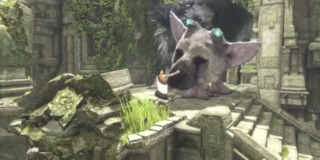
I know that I, for one, had no expectations going in. The Last Guardian actually came out. I could download it. I was hearing mixed things. And so, I had to see for myself.
Sometimes surprises can be the bad kind, where you expect the best and end up, unbelievably, with worse than you’d let yourself imagine; sometimes though, you expect nothing, and are delivered something so incredible, so joyful, so hopeful, complete, and humane, that it reminds you of the best we’re capable of, in ways you’d never expected. The Last Guardian was that moment this year for me.
The Last Guardian is an extension of, and a response to, everything that Ueda built with his prior two games: a reexamination of the protector/protected relationship from Ico, crossed with the sense of wonder and scale from Shadow of the Colossus, taking place in the otherworldly setting all of these games seem to share. The game centers around the relationship between the player character--a young boy--and Trico, a lumbering, living, breathing, four-legged creature, brought incredibly to life onscreen. From the perspective of a game developer, the sheer technical achievement of Trico is mind-boggling. An independent quadruped A.I., capable of physically clambering around every surface and outcropping of a huge, organic world, responding to the player’s inputs in realtime, responding to stimulus in the world, allowing the player to climb all over its entire body while it’s climbing all over the game world, while reacting to the player’s inputs, while reacting to enemy A.I.s, and more, is just an amazing thing.
Trico is such a believable presence, and the technical and design problems the developers of The Last Guardian tackled are so, so difficult, and they have been realized so, so well, that it is just overwhelming to consider. What has been accomplished, purely on a level of technical achievement, is difficult to overstate--and for all of this technical mastery to be brought to bear upon something with the humanity, heart, restraint, and singular vision that Fumito Ueda’s work represents is, frankly, beyond what we deserve. For such an interactive technical achievement to embody empathy, love, compassion, dedication, understanding, and faith in others, at this particular, challenging time in our history, has been so, so important. This is what games are capable of. This is what we can do. This is how good we can be. The Last Guardian is, by far, my game of the year. It is the rare game for which I am truly grateful.
